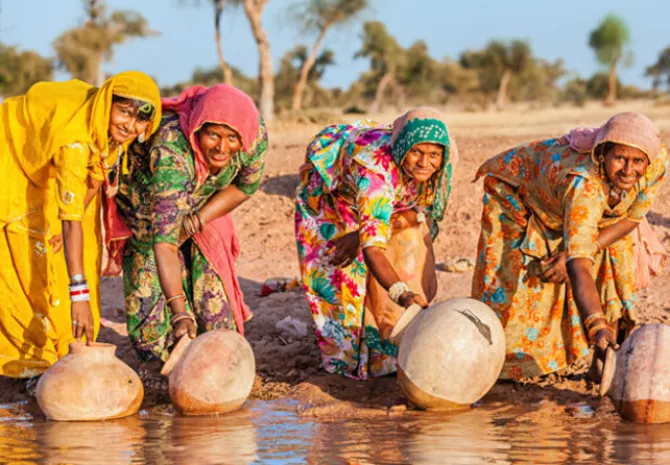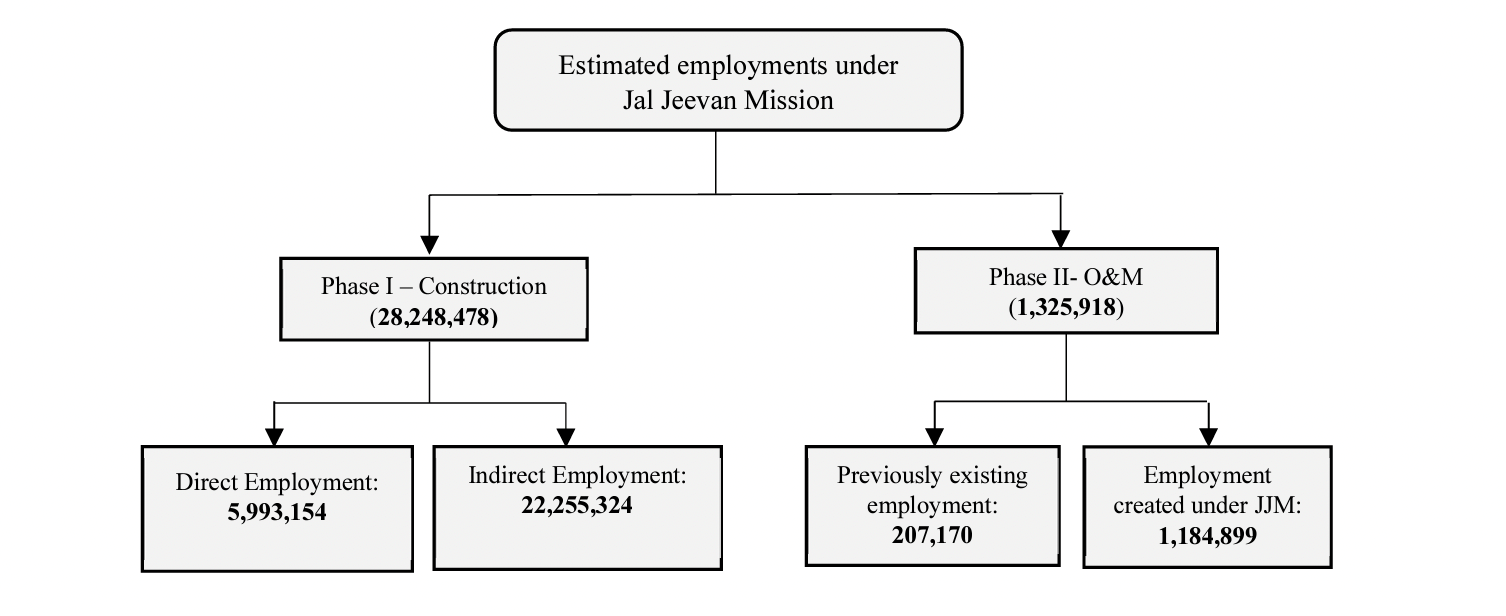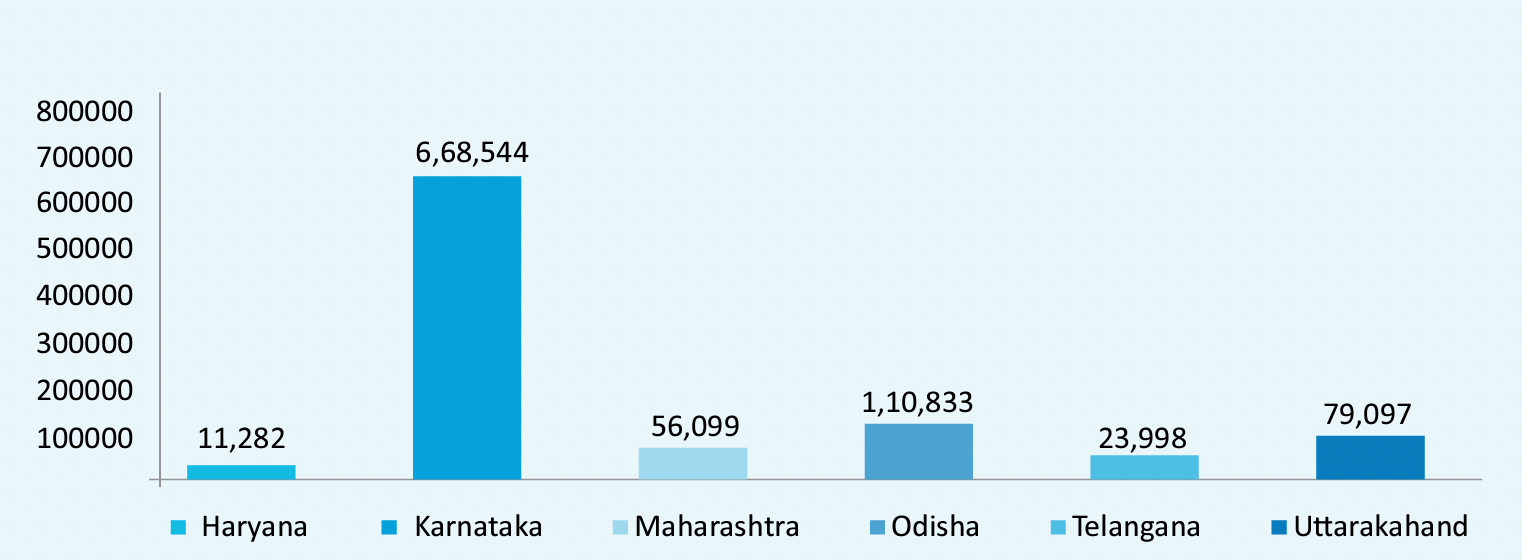-
CENTRES
Progammes & Centres
Location
Many of the jobs created through large-scale programmes on water can be taken up by women as long as the skilling gap is addressed along with gender intentionality in design

Water, which plays a key role in the transition to a green economy, has the potential to boost employment generation, especially for women. Globally, women are the primary users, providers, and managers of water in households and communities. The experience and knowledge of women in water management are recognised as an underutilised resource. Jobs in the management of water resources are defined as green jobs as they contribute to preserving or restoring the quality of the environment. The employment generation potential of green and related sectors is set to surge in India. According to an assessment by the International Labour Organisation, cumulative jobs in water management in the country could increase to 19 million by 2030 from 3 million in 2020. Due to a lack of data, the study falls short of predicting the potential of existing as well as future jobs for women in the sector.
Jobs in the management of water resources are defined as green jobs as they contribute to preserving or restoring the quality of the environment.
The link between water and employment is well-established. An estimated three out of four jobs in the global workforce are either heavily or moderately dependent on water, according to a UN report from 2016. Nearly 1.5 billion people, or half of the world's total workforce, are employed in water-related sectors. Water enables both direct and indirect jobs. Direct jobs in the water sector include managing water resources, building infrastructure and provision of water services, like water supply, sewerage, and waste management. The increasing scarcity of water and rising water pollution are expected to lead to new jobs in the sector in technologies like desalination, wastewater reuse, and rooftop rainwater harvesting. Women’s participation and leadership are integral to increasing the efficiency and sustainability of water management processes. An impact evaluation by the World Bank of 122 water projects found that projects which included women were six to seven times more effective than those that did not. Despite the evidence, women make up less than 17 percent of the paid workforce in water, sanitation, and hygiene in developing economies. The number of women employed as technical experts in the water sector is significantly lower than men.
Women’s participation and leadership are integral to increasing the efficiency and sustainability of water management processes.
Currently, the work that women do in water management is restricted to voluntary or part-time roles. Women’s participation in projects is often sporadic, informal, and usually at the lowest level of water management. The rollout and expansion of recent programmes by the central government like Jal Jeevan Mission (for access to tap water in rural households); Atal Mission for Rejuvenation and Urban Transformation (for access to tap water in urban households); Atal Bhujal Yojana (for community-led groundwater management); and Jal Shakti Abhiyan (for saving and conserving rainwater) have created an opportunity to expand the workforce in water management and to ensure that women have access to decent work. These programmes have a bottom-up approach and promote a “sense of ownership” among local communities for implementation. The programmes support both direct jobs and indirect jobs, like water budgeting, financial planning, communication and behavioural change, and monitoring and evaluation of different schemes.
In rural India, where there is a lack of decent work for women, the programme can be transformational.
The employment potential of Jal Jeevan Mission (JJM) is massive. A study released this year by the Centre for Public Policy under the Indian Institute of Management, Bangalore, estimated that JJM could generate 59.93 lakh person-year of direct employment and 2.22 crore person-year of indirect employment. The study does not provide gender-disaggregated data and is unclear on what percentage of these jobs could go to women. In rural India, where there is a lack of decent work for women, the programme can be transformational. Figure 1: Average Annual Employment Generation Potential in Different Stages of Implementation of JJM
 Source: Indian Institute of Management, Bangalore
Source: Indian Institute of Management, BangaloreJobs in water management require specific skills and training. A significant challenge in water-related employment lies in the mismatch between the skills required for these jobs and the available workforce expertise. Water management is not classified as a skill sector in itself, though it is crucial in supporting sectors like agriculture, textile, plumbing, food processing, and manufacturing. At Sector Skills Councils across the country, which offer skill training, there are only a limited number of trainings under water management. These trainings fall under the categories of wastewater treatment and watershed management, and they leave out many emerging forms of employment in the water sector. Figure 2: Total jobs generated in watershed development in selected states 2009-2020
 Source: United Nations Development Programme
Source: United Nations Development ProgrammeThe Mission also gives preference for women to be trained to use kits to test water contamination in every village where up to five persons are trained.
There are some examples of good practices by community-based organisations and state governments in training women. For instance, in the water-parched district of Bundelkhand, Uttar Pradesh, ‘Jal Sahelis’ is a network of women volunteers who have been trained in water management, from repairing handpumps to reviving traditional water bodies. Women have been trained in Rajasthan and Gujarat to work as ‘Bhujal Jankars’ or para-hydrologists who monitor groundwater levels and water quality under Atal Bhujal Yojana. Despite robust policies for community participation, there has been a lack of investment in creating sustainable employment through these programmes. By training women, providing linkages to finance and leveraging self-help groups, there is potential to promote women’s self-employment in water management. This would also serve to strengthen water security in rural and urban areas.
Sunaina Kumar is a Senior Fellow at Observer Research Foundation
The views expressed above belong to the author(s). ORF research and analyses now available on Telegram! Click here to access our curated content — blogs, longforms and interviews.

Sunaina Kumar is Director and Senior Fellow at the Centre for New Economic Diplomacy at the Observer Research Foundation. She previously served as Executive Director ...
Read More +